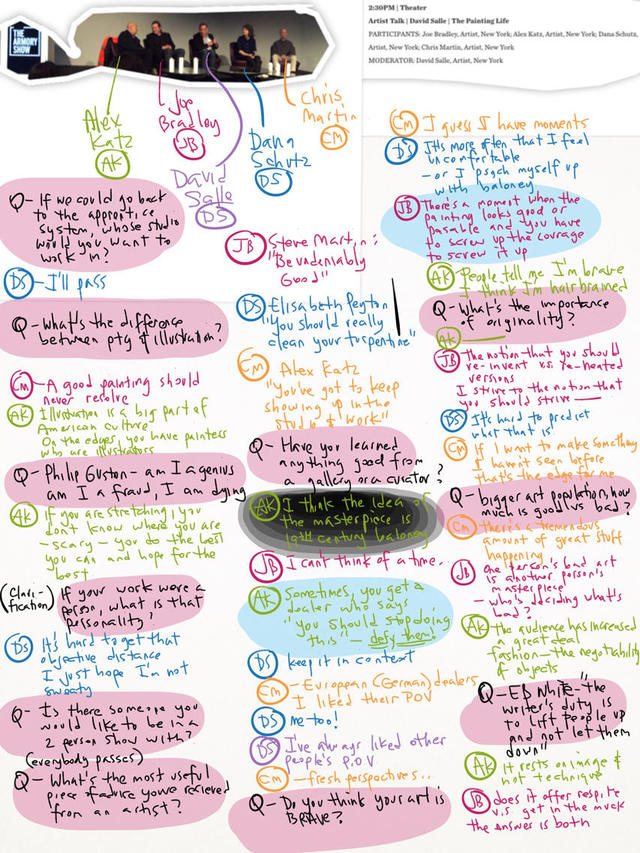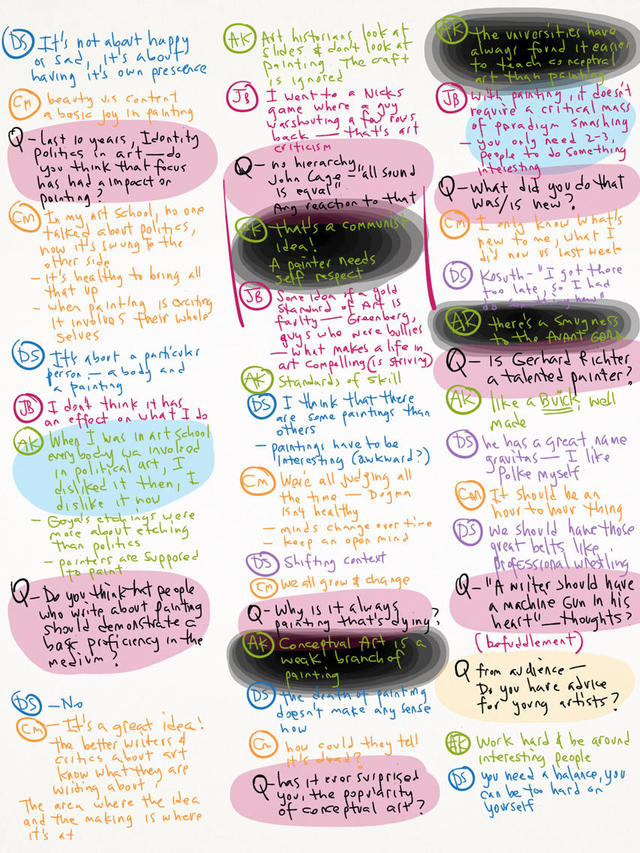March 16, 2017
choose which side you're on
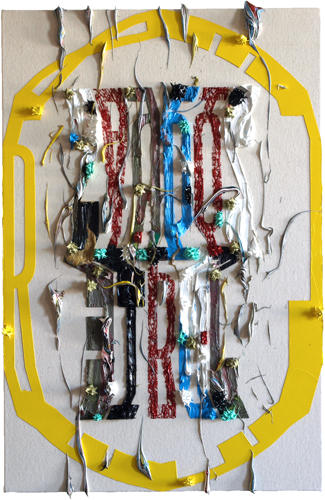
choose which side you're on
2017
#541
30"x20"
Oil on Canvas
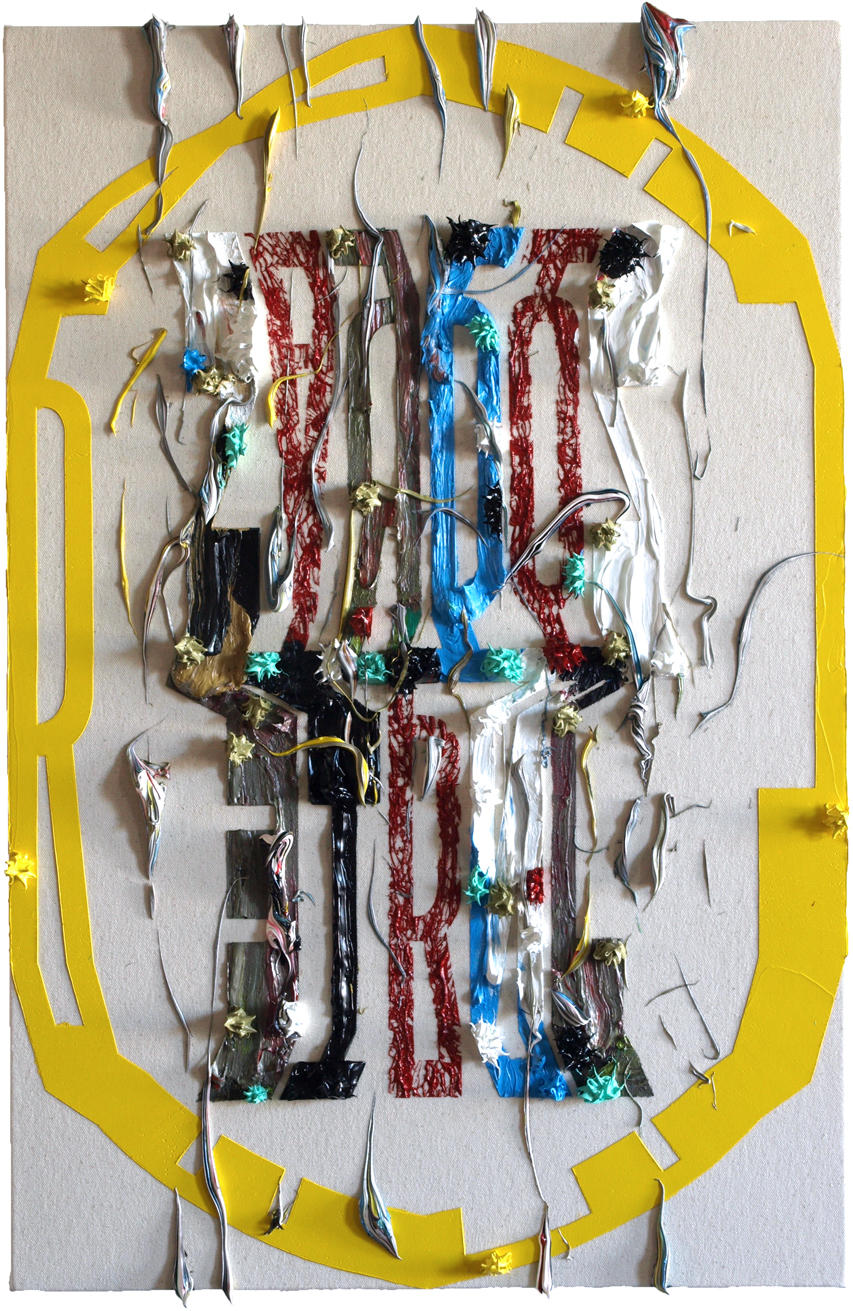
Temerity
Temerity is the artists' occupational hazard. And so in this blogpost, I hazard answers to the questions posed by David Salle in the recent Armory Live symposium. It takes some nerve to think I would be eligible to sit on the stage alongside artists picked by Salle.
With that said...
If we could go back to the apprentice system, whose studio would you want to work in?
There's not a single one that comes readily to mind. Slowly, a list arises, for artists yet living within the time I was a young artist: Rauschenberg, Hockney, Polke, Richter, Auerbach, Baselitz...
What's the difference between painting and illustration?
Illustration serves another, painting serves itself.
Philip Guston wrote, "Am I a genius? Am I a fraud? I am dying." Response?
I assume that many artists have the same feeling that comes to me when I chase a line of thinking in painting to the ground. You aspire towards some destination, guided by intuition. And after some effort, you reach your goal and you paint past it in subsequent paintings. There's a lull that arises as you prepare to reset your objectives. Am I a genius? Am I a fraud?
If your work were a person, what is that personality?
Representations of Christ on the cross, the one by Grünewald, or certain Spanish crucifixion sculptures, or Donatello's Maddalena. The personality would be the one in extremis as flesh becomes spirit.
Is there someone you would like to be in a two-person show with?
Frank Auerbach.
What is the most useful piece of advice you've received from an artist?
Rauschenberg came to a solo show of mine in LA, we had dinner together afterwards. He encouraged me to change with every show, every body of work. I remember thinking that although he changed a great deal, there was a singular quality that could be seen in everything he made. While I haven't emulated his advice the way he did, I hope that I have done this within the language of painting that I have created.
Have you learned anything good from a gallery or a curator?
I've learned that the best of them love art as I do and deserve to exercise their creativity within their realm.
Do you think your art is brave?
Yes.
(Let one beat pass. Two.)
Bravery is needed when you strike out on your own. There's a tremendous herd instinct dominating the art world today. When I was young, I thought that art was a natural home for the misfits of the world. How wrong I was.
What's the importance of originality?
Everything. Isn't art history driven by it?
We have a much bigger art population. How much in it is good versus bad?
I tend to think that the number of of talented, brave and original artists back when the art world was young (40's to the early 60's) is roughly the same as the art world today, even though the contemporary population is immensely larger. There's a lot of dreck to sift through to get to the good stuff.
E.B. White wrote, "The writer's duty is to lift people up and not let them down." Response?
Architecture has a mandate that the architect not kill the client, meaning that like medicine, it has a responsibility to contribute to human flourishing. The realm of art exists in the imagination and its expression exists within a frame that defines it. Within that frame, we are free to find the uplift within darkness, and usually it is via this juxtaposition that we can see the light.
Last ten years, Identity politics in art. Do you think that focus has had an impact for painting?
Definitely, there has been an impact. Whether it has been good or bad is another topic. Generally, we have overshot the mark and are now beating the topic to a pulp.
Do you think that people who write about painting should demonstrate a basic proficiency in the medium?
Since writing is an art, the best art writers demonstrate great art while writing about it. To the question, it's hard to believe that a critic of any medium could willfully -or credibly- disregard the mechanics of the medium that they are writing about. But no doubt, this attitude is probably in the wild.
No hierarchy. John Cage said, "All sound is equal." Any reaction to that?
End state entropy, our dead universe. Scientists say that this will come aeons into the future. But this is now, our own long lived meantime, and any world view that is trying to convince us that we should build a world sans hierarchy is probably trying to assert their authority over us. A grift, in other words.
Short of this, it's useful to remember that all arguments employ artifice, and the ideal of "no hierarchy" is currently and into the deep future, an impossibility that thrives only in the imagination. Art is a bubble in the world, the edges of which is the frame wherein all is possible.
Why is it always painting that's dying?
Painting is like the sun. It's rays, we feel on our faces, plants grow. We looked for the stars beside the sun, so we blocked it out with our hand. And we found stars: Installation, performance, conceptual, and more. Other worlds. And it was good. But we forgot that the sun was there, even why it was there. Along the way, some of us forgot that our hands were held aloft. Others began to mumble, then cried: "Fucking sun! If it wasn't for you, we wouldn't have to hold our hands up to the sky! YOU G-DAMN SELFISH ASSHOLE! You keep the sky all to yourself! You hoard all the glory! DAMN YOU TO HELL!
Has it ever surprised you, the popularity of conceptual art?
What surprises me is the prescience of conceptualism. it hit me one day as I toured the DIA Beacon. The artists exhibited there were setting the stage for an information age that had yet to bloom decades into their future. They anticipated that art could be a set of instructions. (Sol LeWitt wall drawings.) Code. They were clairvoyant.
To the question, what surprises me is that artists worldwide haven't factored in the central conceit of the conceptual project: that art-as-code, art-as-a-set-of-instructions could exist without a physical medium of one kind or another. After all, don't we all well understand today that software requires hardware? All arguments require artifice. It's strange that we could be intoxicated with an idea to such an extent that we follow uncritically, even if it leads past the boundaries of its frame. Shouldn't we be alert to the problem of purity and extremism?
What did you do that was or is new?
Early on, my rap about my painting was that I found a hidden pull down menu in painting: the formal attributes of impasto. Today, I would amend this by saying that many other artists have exploited the physical properties of painting. What I think I have done is to systemize these formal properties into a lexicon in parallel with the other attributes, color and tonality among others.
Is Gerhard Richter a talented painter?
Very! But is talent enough?
"A writer should have a machine gun in his heart." Thoughts?
Artist, Soldier! I have written a few times in my weblog about the parallels between the art world and the military. Most artists think that the world of the soldier is diametrically opposed to the world of an artist. I suggest that there are sympathetic aspects to consider.
The quote suggests that ruthlessness is essential to art. I would agree. But there is also a question as to whom should we be ruthless. When we were in art school, we assembled a jury in our heads composed of artists that we admired. From this jury, we formed a whip to lash, to castigate or encourage. It takes an innate wisdom to avoid the tendency to apply the whip to other people in the world. This whip is meant for self flagellation, when we are alone in the studio.
March 10, 2017
better within itself
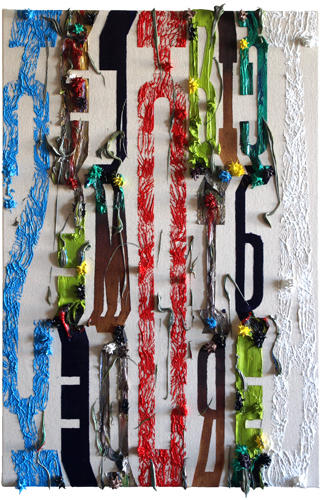
better within itself
2017
#540
30"x20"
Oil on Canvas over Wood Panel
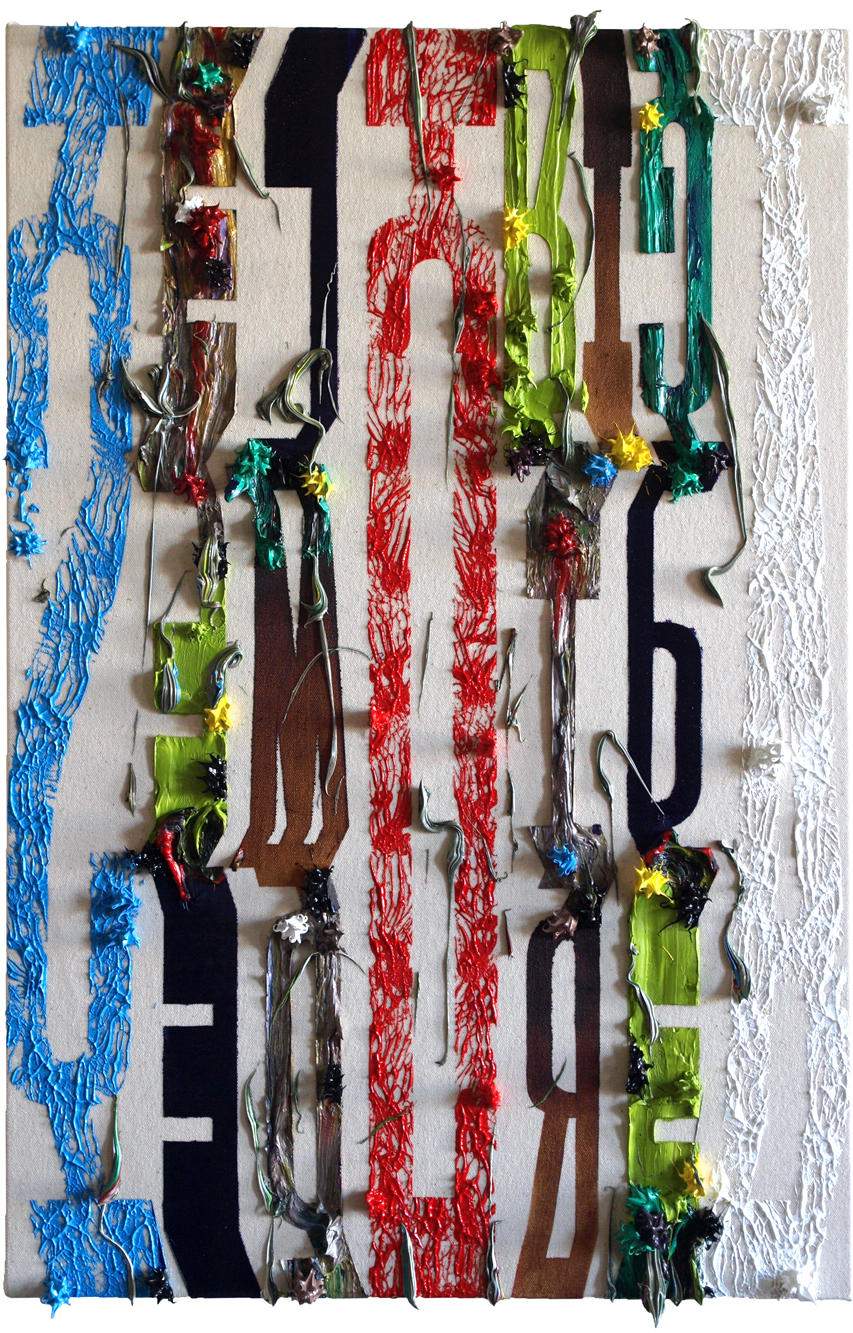
March 5, 2017
Armory Live Talks: The Painting Life
Here are my notes from the NYC Armory 2017 Art Fair symposium featuring David Salle as the moderator with four distinguished fellow painters based in New York City. Of the four, Alex Katz was the stand out, sparkling and spry at 89 years old dropping bon mots at regular intervals. "I think the idea of the masterpiece is 19th century baloney."
Salle's questions to the panel were hilariously relentless, each well read, sometimes showy in this regard. They were the kind of queries that at times seemed better suited for a dinner party, a party game, and this had the effect of making the audience feel intimate and at ease. My personal ambition is to talk more pointedly about where we are in art history, where we've been and where do we think we might be going. What is painting after it had defied its demise? What can be salvaged from art in the 20th century and what must be tossed in history's trash bin? What stars should we navigate by in a 21st century that we are almost twenty years into? If the idea of a conceptualism liberated from the medium (the conceit that declared painting obsolete) is an absurd proposition (the ramification of painting's survival), then what is the interrelationship between thoughts and the (several) mediums of expression?
Well, I wasn't the moderator, David Salle was. Temerity is the artists' occupational hazard, after all.
Artist Talk | David Salle | The Painting Life
PARTICIPANTS: Joe Bradley, Artist, New York; Alex Katz, Artist, New York; Dana Schutz, Artist, New York; Chris Martin, Artist, New York
MODERATOR: David Salle, Artist, New York
Armory Live Talks: Collecting Digital Art
This year, the symposiums at the Armory Fair seem to be improving slightly, giving me a single ray of hope that people will realize that the fairs should amplify the symposium component of art fairs in general.
(start rant)
The strategic apex of an art fair is its ability to collate collectors in one place at one time. The downside is that this subverts the role of the gallery as a prime presenter and community builder of collectors, artists and the art viewing public. It's like processed food, separating and concentrating nutrients to the point where they enter the body asynchronous to the natural system of digestion. It turns collecting into crack, every hit of industrially condensed art/audience/buyers/collectors, amplifying desire and sequentially reducing satisfaction in a logarithmic reduction towards zero. It's a free world and if the market presently gives an advantage to a portable bazaar, we all can only shrug and cope until the day that everyone realizes that they've been taken for granted when art fairs arrogate their advantage, overcharging and dictating what galleries can exhibit in their booths, throttling both customers galleries and collectors, alluring artists to cater to the market. Then on that day, we might recover the freedom to take our business elsewhere... eventually providing the art fair business model a motivation to self regulate and recover it's equilibrium. The art fair itself is not bad intrinsically, but only so when it it tends to be the only game in town.
(end rant)
Most of the topics in this years Armory Live offerings catered to the collecting class. I hope in the future, art fairs would showcase the symposium part of their program and amplify its content towards artists in general.
Here are my notes from the talk about collecting digital art. I was curious about what can be done with the problems arising from rapid technological change. We cycle through computers and cell phones one generation after another, operating systems become obsolete, hardware eventually ends up in third world scrapyards in the blink of an eye, media becomes legacy media faster and faster. I've got a stack of transparencies from the 90's that are waiting to be scanned into jpegs. I've been archiving this blog into the WayBack Machine. What are digital artists doing to cope with accelerating change?
Conversations on Collecting | Collecting Digital: Art, Technology, Preservation and Posterity
PARTICIPANTS: Tabor Robak, Artist, New York; Chrissie Iles, Anne and Joel Ehrenkranz Curator, Whitney Museum of American Art, New York; Pamela and Richard Kramlich, Collectors, San Francisco; Michael Connor, Artistic Director, Rhizome, New York; Sima Familant, Private Curator, Art Advisor, New York; Michael Xufu Huang, Collector and Co-Founder, M WOODS, Beijing
MODERATOR: Erica Barrish, President of EAB Fine Art Services, New York
March 1, 2017
Artist/Soldier: Dan Carlin's Armageddon

My experience learning art history is probably similar to the majority of artists who relied on art education as the singular introductory portal or authority into that body of knowledge. The problem with this is that we had only learned about the churn of successive generational gestalt solely within the prism of art's agenda. We didn't learn in parallel the general background of each epoch that set the stage for each historical turn, outside of the generic high school history class, a rushed chart of the peaks of dates and signal events to be memorized, bases tagged and soon to be forgotten with the onset of the next years' curriculum. To learn such an abstract schema of a historical narrative, one can only glean a faint trace of the urgency felt so keenly in each era, the ground from which art had formulated its agenda.
Listening to the podcasts of Dan Carlin's Hardcore History, Blueprint for Armageddon, my mind flashed the slides projected in my art history classes. The impact of the Industrial Revolution on the logic of war. The push back against Classicism by nascent Modernism with the Impressionists. The clairvoyant anticipation of the absurdities of Modernity via proto-PostModernists such as Alfred Jarry. The significance of the Nation-State and its' ability to raise the stakes of war, making human life as cheap and expendable as ammunition. The depth of disgust in the paintings of George Grosz. The thousand yard stare of Max Beckmann. And especially Dadaism.
Listening to the 19 hours of Carlin's Armageddon -his vivid narrative of World War I- enables us to grasp just what Dadaism is in the depth of its' feeling.
Carlin described WWI as a historical estuary, where the opening act spotlit a French calvary whose uniforms and deportment was an accurate picture of Napoleonic era a century earlier. The final grisly scene is dressed in grays of miner's uniforms, chromatic clouds of toxic gases and lurid macabre horror that I can only pathetically fail to suggest here. One needs at least 19 hours to merely approximate what carnage might have meant in that particular historical moment. If the frightfulness of war is its' only restraint, then the expansion of scale enabled by modernity -and this is what Carlin's 19 hours will render vivid for you- will find it's tentative conclusion in the 20th century's formulation of MAD. MAD, mutually assured destruction has been characterized as a plateau of madness that has kept us safe in the past century, an abstraction kept so that we might remain sane.
I like to capsulize the definition of Modernism and PostModernism by saying that 1) they were born Janus faced as one with the sunset of Classicism, 2) to be Modern is to reconcile the things one makes with the life one lives, 3) that Modernism tried to touch G-d via material means, 4) and PosModernism pointed to everyday life via conceptual means. This is all too tidy after all. This allows us to think about modernity but not necessarily to FEEL modernity. It doesn't capture the screaming birth of modernity, the dilation of frightful inhumanness and desperate hope. It doesn't render vivid the slam of the acceleration of change. We live a life of faster velocity today but we don't feel the multiplying gravities of acceleration that made WWI and the turn of the 19th to the 20th centuries what it really was.
Take the time to listen to Carlin's six podcasts, and think along with me, about the images that flashed on the screen of our old art history classes.
